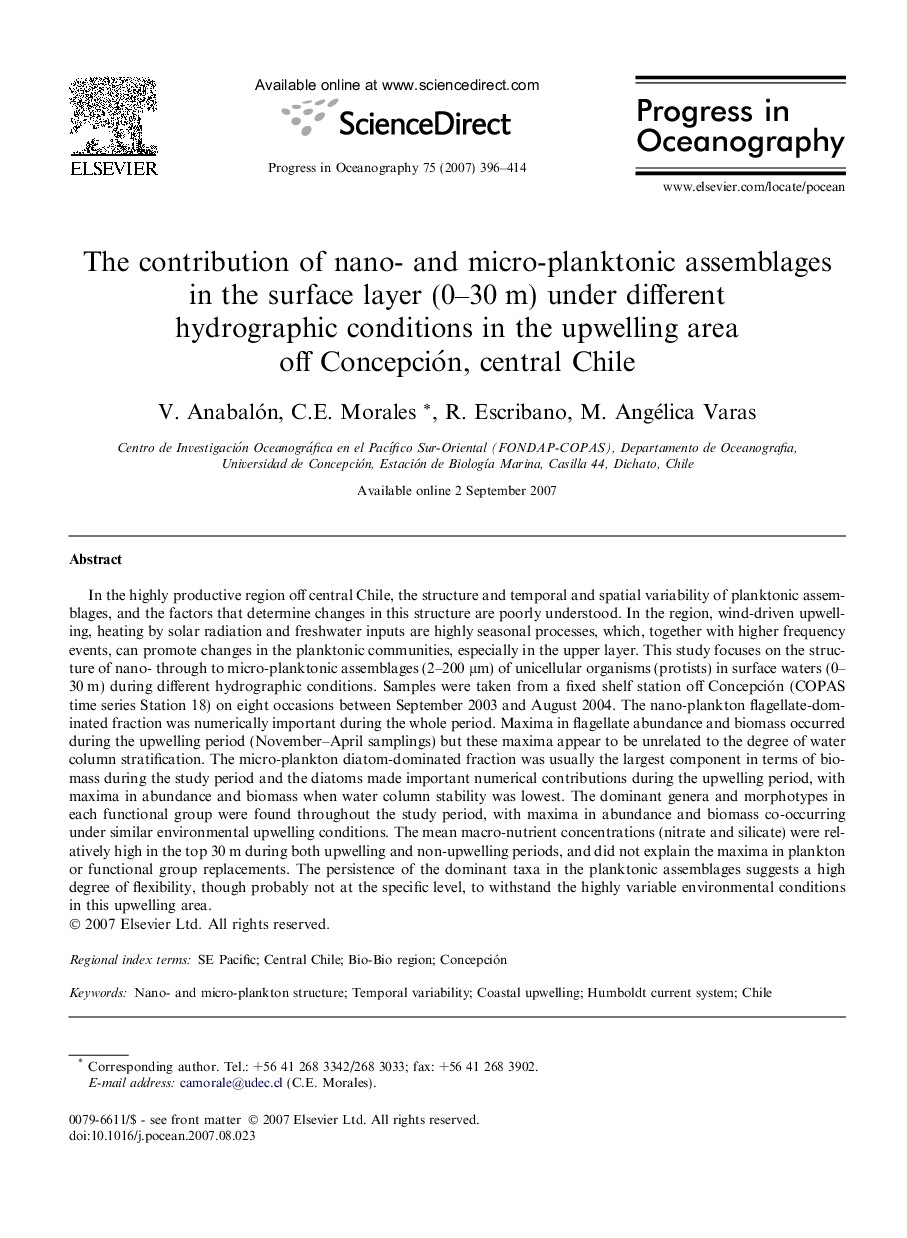| کد مقاله | کد نشریه | سال انتشار | مقاله انگلیسی | نسخه تمام متن |
|---|---|---|---|---|
| 4553792 | 1328931 | 2007 | 19 صفحه PDF | دانلود رایگان |

In the highly productive region off central Chile, the structure and temporal and spatial variability of planktonic assemblages, and the factors that determine changes in this structure are poorly understood. In the region, wind-driven upwelling, heating by solar radiation and freshwater inputs are highly seasonal processes, which, together with higher frequency events, can promote changes in the planktonic communities, especially in the upper layer. This study focuses on the structure of nano- through to micro-planktonic assemblages (2–200 μm) of unicellular organisms (protists) in surface waters (0–30 m) during different hydrographic conditions. Samples were taken from a fixed shelf station off Concepción (COPAS time series Station 18) on eight occasions between September 2003 and August 2004. The nano-plankton flagellate-dominated fraction was numerically important during the whole period. Maxima in flagellate abundance and biomass occurred during the upwelling period (November–April samplings) but these maxima appear to be unrelated to the degree of water column stratification. The micro-plankton diatom-dominated fraction was usually the largest component in terms of biomass during the study period and the diatoms made important numerical contributions during the upwelling period, with maxima in abundance and biomass when water column stability was lowest. The dominant genera and morphotypes in each functional group were found throughout the study period, with maxima in abundance and biomass co-occurring under similar environmental upwelling conditions. The mean macro-nutrient concentrations (nitrate and silicate) were relatively high in the top 30 m during both upwelling and non-upwelling periods, and did not explain the maxima in plankton or functional group replacements. The persistence of the dominant taxa in the planktonic assemblages suggests a high degree of flexibility, though probably not at the specific level, to withstand the highly variable environmental conditions in this upwelling area.
Journal: Progress in Oceanography - Volume 75, Issue 3, November 2007, Pages 396–414